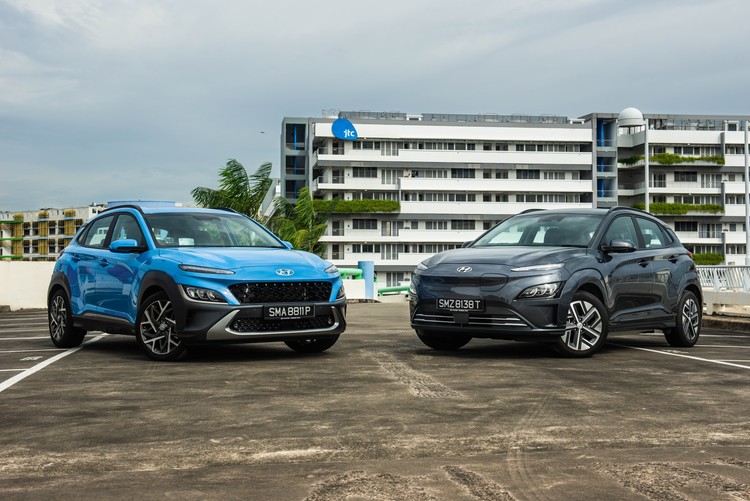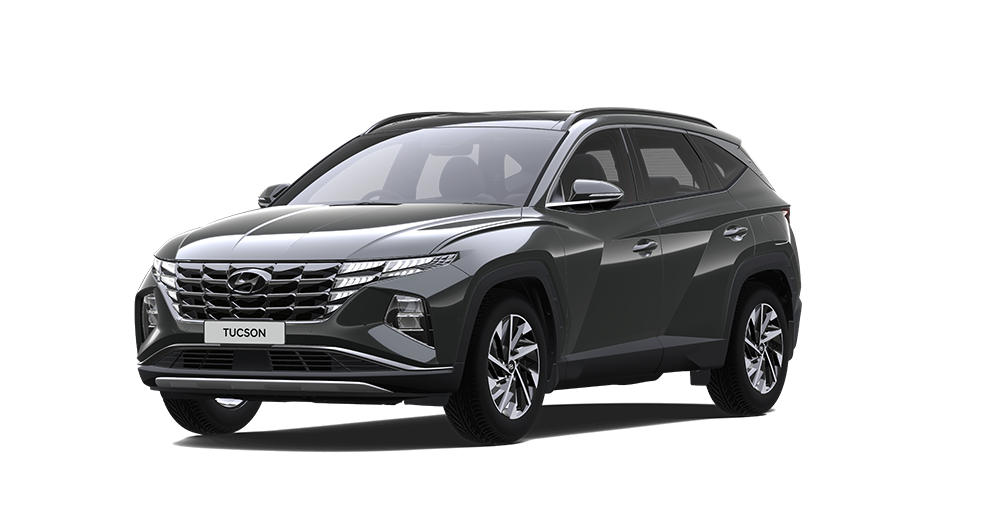A new year means new changes, and regulatory wise there’s been a few rules in the Singapore automotive industry that have been revised for 2024. A pretty significant one is an updated Vehicular Emissions Scheme (VES), which has seen standards for some of the emissions bands tightened. The knock-on effect has seen car brands scrambling to introduce revised models that can now meet the new standards so that they won’t be penalised by their existing cars being bumped into a more pollutive band, and thus incurring penalties, or at least the removal of rebates.
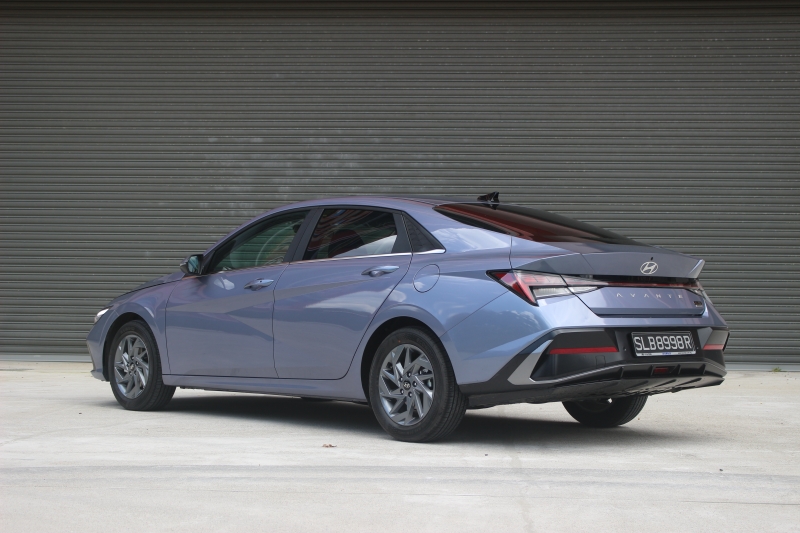
One such example is the facelifted Hyundai Avante, which is now available in Singapore solely as a hybrid model. The move sees the car remain in the VES A2 band, although that now attracts a S$5,000 rebate instead of S$15,000 previously. Still, it’s better than nothing, as the previous internal combustion engined (ICE) model was set to be bumped up to the neutral B band (which gets no rebates) under the new VES classification.
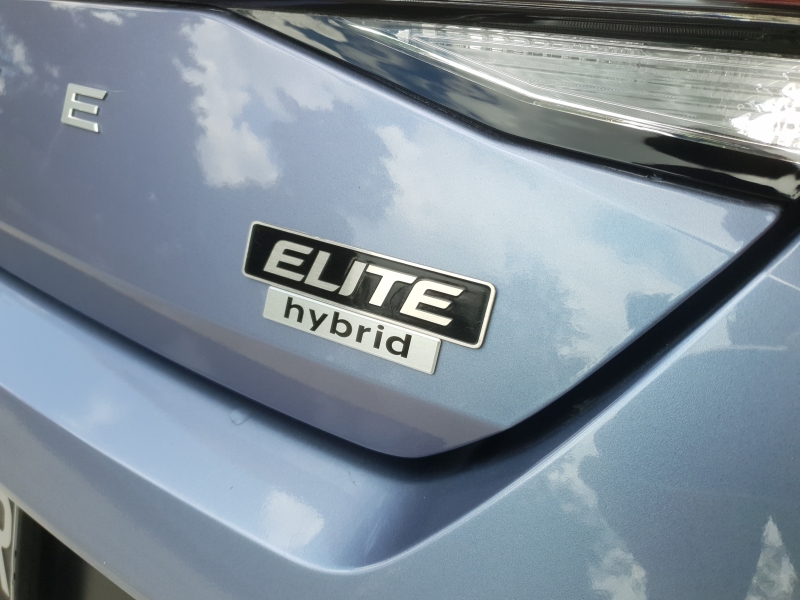
The introduction of hybrid power though should further sharpen the Avante’s appeal, given the resultant efficiency benefits it brings. As it is, the current generation car was already a breakthrough of sorts, with its sharp and eye-catching design matched with an impressive list of standard equipment that made it sit right at the top of its class.
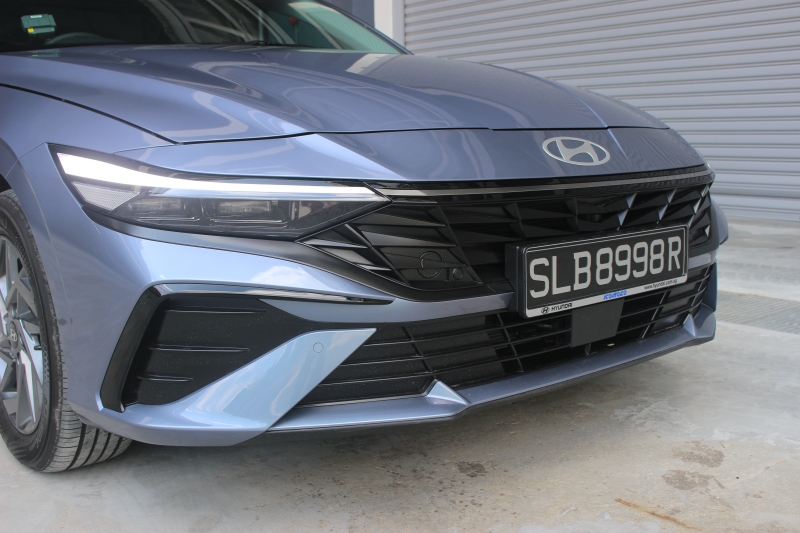
The mid-life update to the Avante sees a few minor tweaks to the car’s exterior, the most noticeable of which is the wider and slimmer front grille. The change is very subtle, but it does give the car a slightly more aggressive stance, complemented by the thin trim piece that connects the front headlights, and the additional ‘intakes’ on the lower front bumper. There are also very minor revisions to the rear bumper trim, but they’re not immediately evident. Overall, the Avante retains its sleek and futuristic form that made it such a dashing sight on the roads.
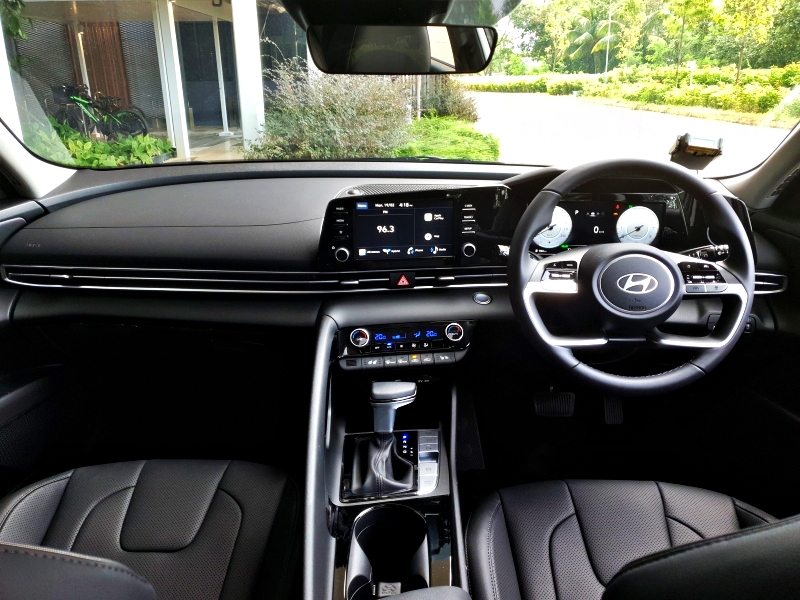
Inside, the Avante is really business as usual, which is just as well, given that it is already a pretty well-appointed car, with a sleek and modern cabin that feels contemporary and upmarket. There are some bits of the interior that does feel a bit less premium, such as the cabin lights and roof liner. But bear in mind – this car is targeted at the lower end of the consumer spectrum, so one shouldn’t have too much expectations on luxury touches.
Nevertheless, the Avante remains stacked full of equipment, with standard features including wireless Apple CarPlay/Android Auto, a wireless smartphone charger, an all-round view reverse camera, and USB-C charging ports for the rear passengers. On the test car’s top-spec Elite trim, you also get heated and ventilated seats, as well as a sunroof.
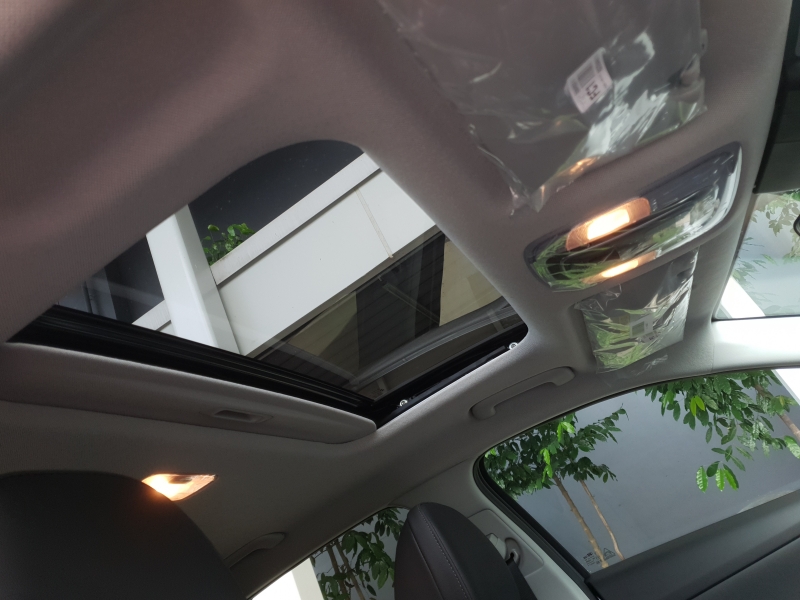
There is a whole host of driver assistance functions thrown in as well, including adaptive cruise control, and all sorts of warning and collision prevention systems to prevent you from hitting anything in your vicinity. The Lane Keeping Assist is particularly intrusive however, and while you can switch it off, the feature comes on again by default every time you start the car.
It is the same with the car’s driving modes, of which there are three to select from: Eco, Sport or the adaptive Smart mode. The latter is the one you want for daily driving, but the car defaults to Eco mode on every startup, which is fine if you’re in a particularly fuel-saving mood, but it can get rather annoying as Eco mode delivers a somewhat watered-down experience with its reduced throttle response.
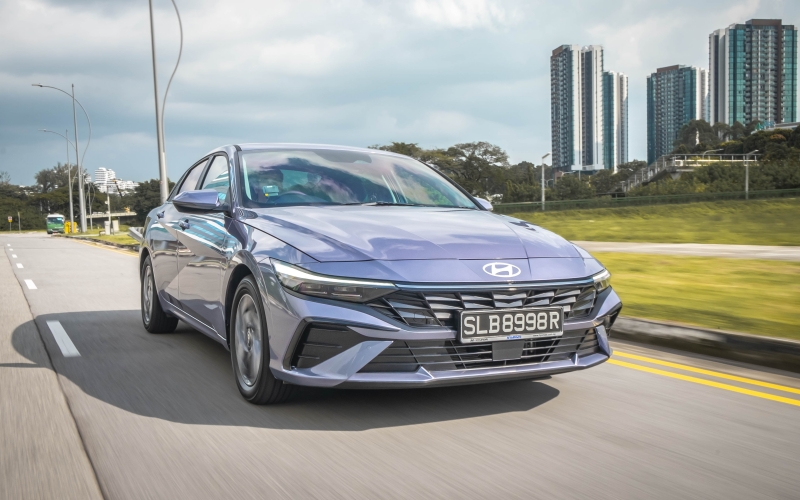
If you remember to switch to the Smart mode though, the Avante transforms into a much more pleasant proposition. The car’s power output is a modest 129hp (tweaked down from the original 141hp in order to get the car into COE Category A), but it also offers a pretty generous 265Nm of torque. As a result, the Avante Hybrid is pretty sprightly in its step, eager to get going whenever you put your foot down. This sensation is much more pronounced in Sport mode, but it comes at the expense of noise, as the powertrain can sound quite rowdy when pushed.
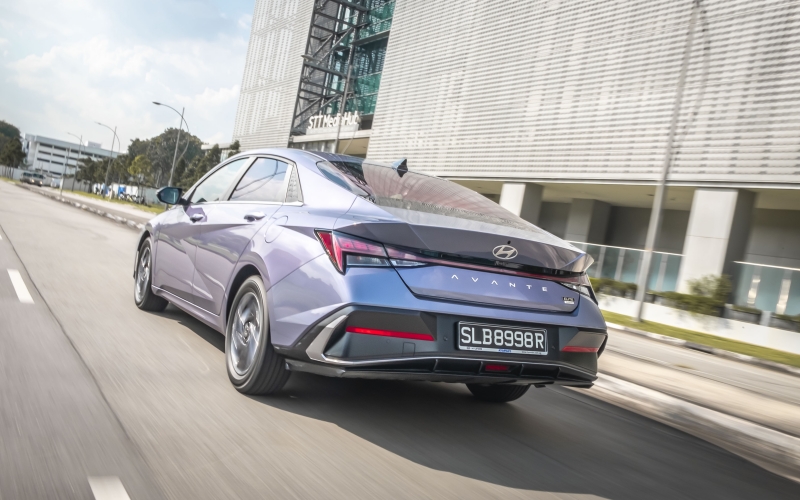
It combines that with a ride and handling balance that’s arguably one of the best in its segment, with its multi-link suspension doing all the hard work in both ironing out bumps as well as keeping the car planted in the corners. Together with its well-sorted chassis and steady, if slightly uncommunicative, steering, and you get a family sedan that’s really rather nice to drive. I won’t go so far to call it entertaining, but let’s just say I’m not surprised that Hyundai has opted to come up with a hot Avante N variant, given the capable base with which it has to work with.
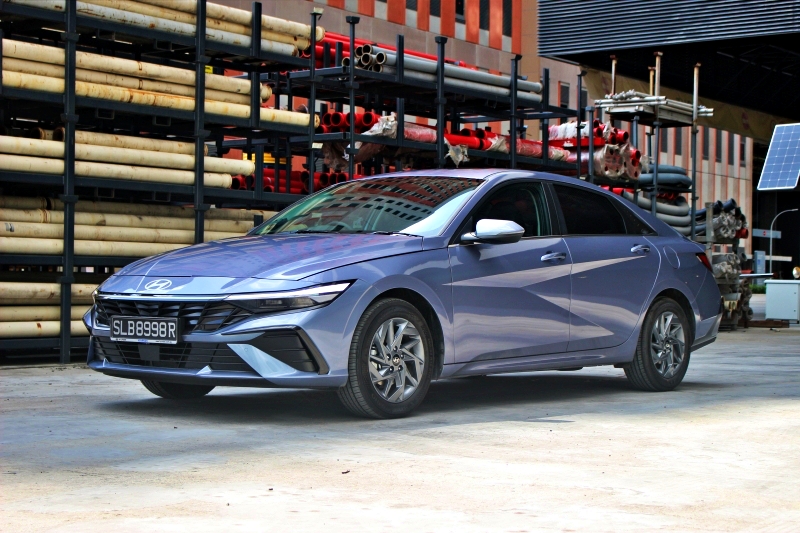
And yet when you’ve decided you wanted to slink back into efficiency mode, the Avante Hybrid excels in that area as well. Hyundai claims an average fuel consumption figure of 4.7L/100km, which is an improvement of the petrol car’s 5.4L/100km, but if you’re careful with your right foot, even without toggling Eco mode, 4.0L/100km is eminently achievable on the right roads and conditions.
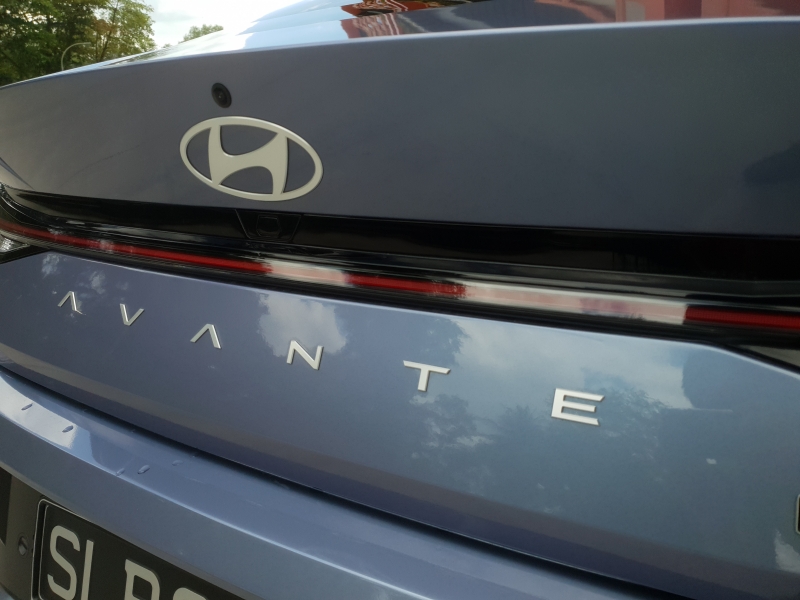
Viewed in that light, it’s hard not to see the Avante Hybrid as anything but a success. Being more efficient while still competitively-equipped, with the bonus of being nice to drive to boot, means that the Avante Hybrid absolutely has to be at the top of the list for anyone in the market for a family sedan in 2024.
Read the full review here: https://asia361.com/2024/03/13/car-review-hyundai-avante-hybrid/


